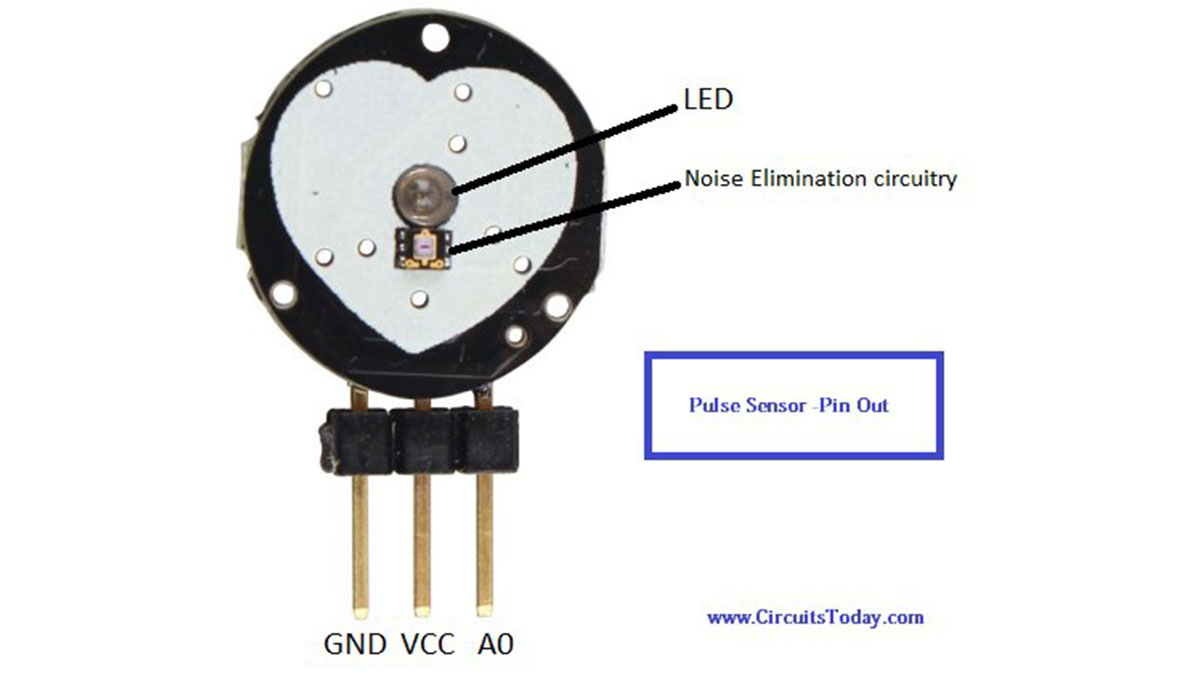In this article, we are going to interface a Pulse Sensor with Arduino. The pulse sensor we are going to use is a plug and play heart rate sensor. This sensor is quite easy to use and operate. Place your finger on top of the sensor and it will sense the heartbeat by measuring the change in light from the expansion of capillary blood vessels.
Pin Out – Pulse Sensor

The pulse sensor has three pins which are as described below:
- GND: Ground Pin
- VCC: 5V or 3V Pin
- A0: Analog Pin
There is also a LED in the center of this sensor module which helps in detecting the heartbeat. Below the LED, there is a noise elimination circuitry which is supposed to keep away the noise from affecting the readings.
Working – Pulse Sensor
When a heartbeat occurs blood is pumped through the human body and gets squeezed into the capillary tissues. The volume of these capillary tissues increases as a result of the heartbeat. But in between the heartbeats (the time between two consecutive heartbeats,) this volume inside capillary tissues decreases. This change in volume between the heartbeats affects the amount of light that will transmit through these tissues. This change is very small but we can measure it with the help of Arduino.
The pulse sensor module has a light which helps in measuring the pulse rate. When we place the finger on the pulse sensor, the light reflected will change based on the volume of blood inside the capillary blood vessels. During a heartbeat, the volume inside the capillary blood vessels will be high. This affects the reflection of light and the light reflected at the time of a heartbeat will be less compared to that of the time during which there is no heartbeat (during the period of time when there is no heartbeat or the time period in between heartbeats, the volume inside the capillary vessels will be lesser. This will lead higher reflection of light). This variation in light transmission and reflection can be obtained as a pulse from the ouptput of pulse sensor. This pulse can be then coditioned to measure heartbeat and then programmed accordingly to read as heartbeat count.
Read More: Pulse Sensor and Arduino – Interfacing
